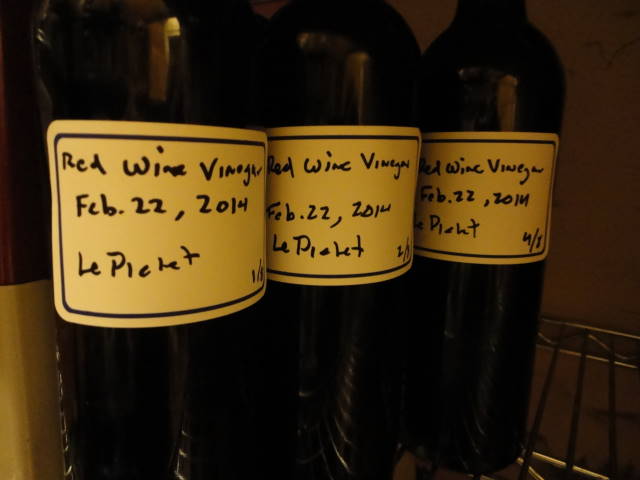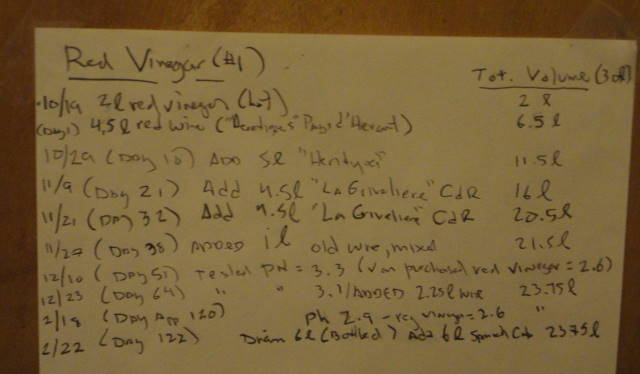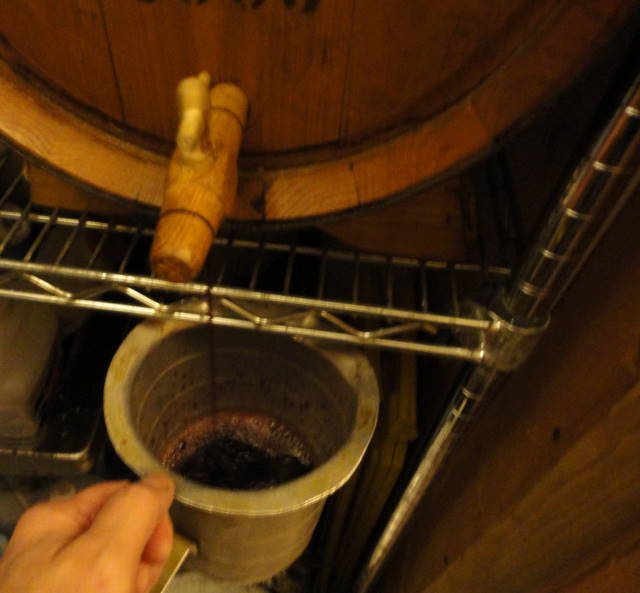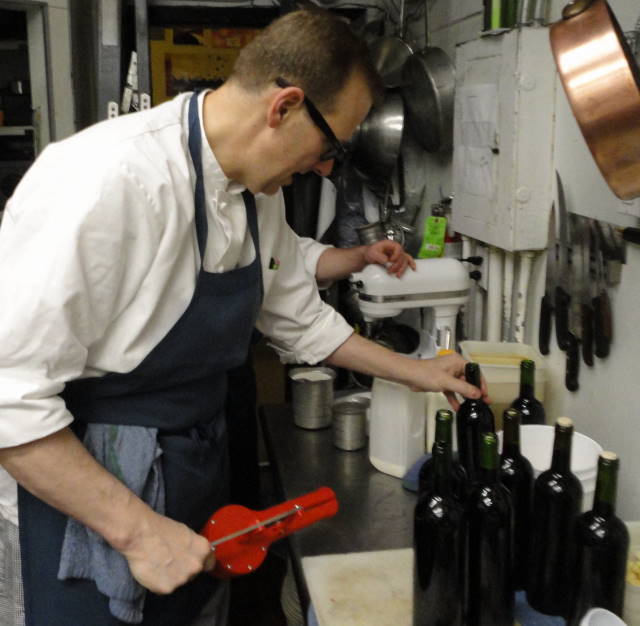
Finally, after many days of waiting, the red wine vinegar in our barrel at Le Pichet is ready for use.
As described in an earlier post, last October we started a batch of vinegar using an old 3o liter oak Beaujolais Nouveau barrel as the receptacle. Since then we have patiently added more wine (mostly young, fruity reds from the Cotes-de-Rhone and Languedoc) to the barrel every 10 days, until it contained about 24 liters. Although the barrel will hold 30 liters, wanted to leave some air room at the top, as the vinegar “mother”, a sort of floating raft of beneficial bacteria that does the work of turning the alcohol in the wine into acid for our finished vinegar, needs free access to air to do its work.

Each week, we watched as the Ph level descended, indicating that the acid level was increasing. Until finally last week, it reached a Ph level corresponding to an acidity of about 5%, the sign that it was ready for use. We tapped of 6 liters of rich red, earthy vinegar, decanted it into clean wine bottles and corked it. In theory, putting the vinegar in closed bottles, cut off from air, should stop it from becoming more acidic. In theory.


Of course a taste test was in required. I was surprised how much richer and meatier our first try tastes than purchased red wine vinegar. There is an almost smokey flavor that hits right away when you take a sip, before the acidity overpowers all the other flavors. The oak of the barrel and ripe flavors of young wine from the south of France have melded nicely.
Although we will certainly want to use some of our vinegar right away, I think it will be fun to put 4 bottles away to see how it tastes in 6 months or a year. In the mean time, if you notice more red wine vinegar than usual in our cooking, well I guess you will know what is behind it.